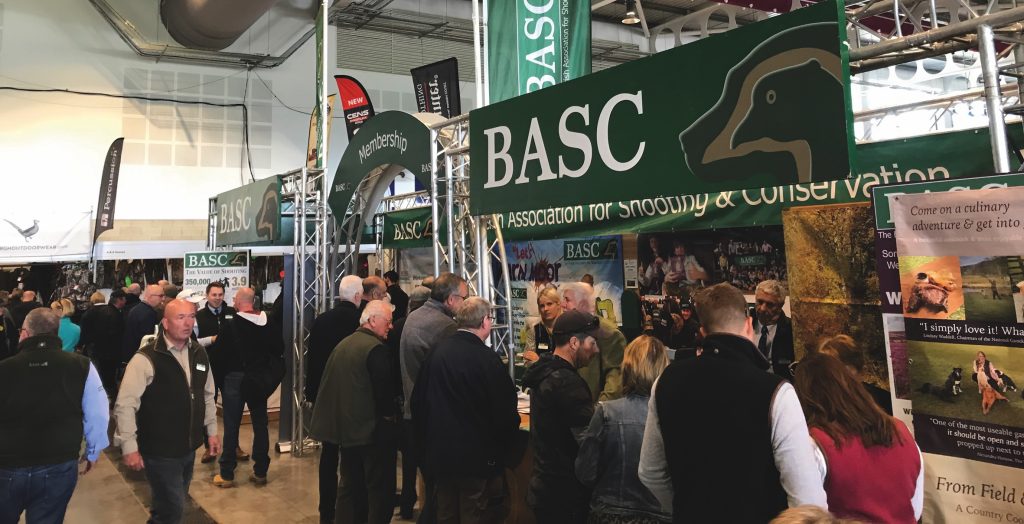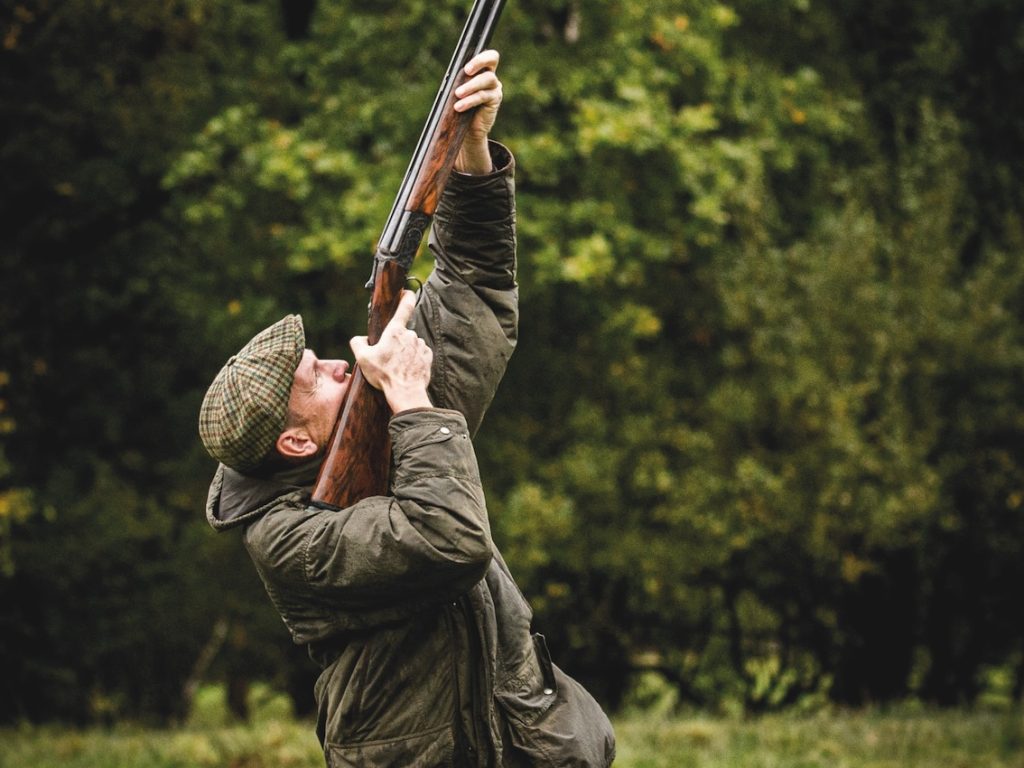Win CENS ProFlex DX5 earplugs worth £1,149 – enter here
Remembering keepers
In 1914, there were 23,000 gamekeepers; after the war, only 6,000. Joanna Gray salutes the keepers who served and discovers how shooting coped in their absence
Private Edwin Charles Langley should have felt at home in the village of Bapaume the Picardy countryside is not dissimilar to England’s; farmed fields, woodlands filled with game and sufficient rain for it not to feel too “foreign”. His being there in the autumn of 1918, however, put paid to any comparisons with the Shropshire of his memory. For Private Langley died of his wounds on 9 September, 1918, after his company, the King’s Shropshire Light Infantry, fought in the Second Battle of Bapaume, a gruelling fight that succeeded in pushing back the Germans five miles. Aged 36, he was a gamekeeper from Longford in Shropshire. Owned by Colonel Leeke, who suffered the loss of both his sons during the war, Longford Hall estate soon fell apart after 1918. The contents of the house were sold in the 1930s. During World War II, the house was requisitioned by the State and changed hands until Adams’ Grammar School bought it in 1962.
The school’s archivist explains that the house is “now used for Junior Boarding and the grounds for sports”. A far cry from the estate that the long-dead gamekeeper would have known. This story can be repeated across the country. As gamekeepers, estate workers, male heirs and the general army of people who keep estates running, were killed between 1914 and 1918, the British countryside, the landowning classes and shooting concerns were changed for ever.
By 1911 there were more than twice as many keepers in rural districts as policemen (15,657 versus 7,041) and, as shooting thrived, so the numbers increased until World War I and then they plummeted, to decline to today’s 6,000. This is not to suggest that during the war gamekeepers were disproportionately killed as compared with any other segment of society, but rather that their deaths uniquely affected many rural communities.
The impact of slain keepers
Nowhere is this more obvious than the simply appalling episode in Gallipoli, on 12 August 1915, in which 14 officers and 145 men were killed, a proportion of whom were members of the Sandringham Company. Now fighting in the 5th Battalion Norfolk Regiment, the Sandringham Company had comprised almost entirely estate workers, keepers and farmhands. Many of these men found themselves exposed on the front line, and suffered great casualties. Movingly recreated in the film All the King’s Men, it highlights how, as present-day Sandringham estate administrator Helen Walsh states, “It simply tore the heart out of the estate. It took years for the community to get back on its feet.” In all, a total of nine gamekeepers from Sandringham were killed between 1914-1918 but only one in Gallipoli, the others in different regiments littered the battlefields of France and Palestine.Being owned by shooting enthusiast and monarch George V was no doubt a factor in Sandringham’s survival as a sporting estate after the war, but many other estate owners were forced to put down their guns. A combination of slain keepers and heirs, financial difficulties caused by the introduction of Lloyd George’s wincingly greedy death duties in 1910, and sometimes changes in morality, saw sport disappear from many famous Edwardian shooting estates.
The Grange in Hampshire, owned by Lord Ashburton, one of the most celebrated Shots in Britain, was one such casualty. After the war, shooting continued but only on a small, private scale. The house and land are now owned by English Heritage.
The patriotism of all classes
However, we must not imagine that the absence of keepers was necessarily resented by sporting landowners. Most were happy to suspend or at least reduce shooting and hunting during the war. The patriotism of the time cannot be underestimated; the authorities were inundated with offers of country houses
for use as hospitals and convalescent homes. Landowners set up their own rifle ranges to train young men, with poachers now being sought out as possible recruits. At Woburn Abbey, the riding school and indoor tennis court were turned into a 100-bed hospital and estate workers unfit for military service were used as stretcher bearers. Elveden saw the army requisition 1,000 acres, plough up gamecrops and put some of the first-ever tanks on trial. Rearing pheasants was abandoned and there were no big shooting parties until the 1930s.
Landowners more often than not encouraged their estate workers to sign up. Country Life magazine posed five questions in early 1915, which included, Have you a man preserving your game who should be helping to preserve your country? Ask your men to enlist today. Many landowners promised that their men would have jobs to return to and by sending their own sons off to war set an example not many could ignore. For it wasn’t simply the estate workers who suffered the aristocracy hadn’t lost such a proportion of its sons during a conflict since the Wars of the Roses.
Adapting to absent keepers
Sport didn’t stop altogether but there was a marked reduction. By May 1915, Country Life reported that on many estates where vast numbers of pheasants had been reared “no eggs are being set this year”. By 1918, the Gorhambury estate, for instance, had so few keepers that no rabbits were shot, while the bag of pheasants and partridges was less than half its pre-war figure. As well-run shoots meant a well-run countryside, people were soon complaining about the net deterioration in the fabric of the land. With keepers fighting with guns against the Germans rather than snares against Reynard, fox numbers began to increase and within 40 years had doubled in some places. In 1917, under pressure from the Board of Agriculture, the Government gave tenant farmers the power to shoot pheasants that came on to their land and gobbled up crops.Of course there were exceptions. On 12 August 1915, the Earl of Sefton and other Guns made a record bag of 2,929 grouse at Abbeystead. Lord Northampton became a wartime shooting devotee ? during leave of four days in early 1915, he enjoyed shooting pheasants at Castle Ashby.
However, Country Life reported that sport for many men back from France and Flanders wasn’t what it used to be, We hear it said by all the soldiers who have come back and have been shooting that the war seems to have a disastrous effect on their marksmanship. They are disposed to attribute it to a little natural “jumpiness” of nerves after listening to the shells bursting around them for so many days. For the most part though, people adapted to the absent keepers. While Aubrey Trinder, a gamekeeper to Lord Abingdon and later to a Mr Lane, was fighting during the war, his wife, simply recorded as Mrs Trinder, took over his keepering duties.
Disabled servicemen were also drafted in to help. The Imperial War Museum holds a haunting sound recording of a certain Private Bob Murdie, who recalls being invalided out of World War I and being employed by the army to act as temporary keeper at Beaufort Castle on Lord Lovat’s Beuly estate. He was paid 30 shillings to live in a bothy alone for a year and kill rabbits.
Benefits of keepers in the ranks
The loss of keepers to British estates was a benefit to officers who were often thrilled to discover a gamekeeper, stalker or gillie among the ranks. As reported in Country Life in January 1916, On many big estates more than two thirds of the staff have exchanged the shotgun and the traps for the service rifle and the bayonet…they are the right stuff…constant practice has rendered their eyesight almost preternaturally keen, and they are able to pick out, on distant slopes and ridges, objects so small in size as to be quite invisible to ordinary eyes.
The most famous incidence of gamekeepers excelling themselves in warfare was the formation of the Lovat Scouts ? a special corps of stalkers, gamekeepers and shepherds assembled by Lord Lovat to fight during the Boer War. By 1914 there were two regiments of 1,200 men who served in Gallipoli, Egypt and Macedonia and acted as elite scouts on the Western Front. No wonder, then, that Private Bob Murdie was needed to tend the rabbits while the gamekeepers on the Beuly estate were away fighting. When these hardened stalkers and keepers came down from the Highlands in their furs to train in the Fens, there were terrible rumours that the Russians had successfully invaded, so fearsome did they appear.
By November 1916, their reputation for scouting and observing was so entrenched that an elite group of snipers was formed called the Lovat Scouts (Sharpshooters). Other Highland regiments were combed for stalkers and gillies to swell the ranks and an advertisement appeared in all Scottish newspapers calling for 100 stalkers and glassmen between the ages of 41 and 45 for stalking Bosches. Lord Lovat succeeded in extending the age limit to ensure that a certain C. B. Macpherson of Balavil (a true expert with the telescope and map) came out to France at the age of 62 with his specially trained group of Lovat Scouts. No fewer than 481 Lovat Scouts lost their lives and of the men who formed the original 10 groups of Lovat Scouts Sharpshooters, one in five was awarded a military decoration.
After the peace
As the war continued and death duties pinched, the sales of estates suffered an upsurge in 1917 and continued apace into the 1920s. Such sales played no small part in the destruction of at least 1,700 English country houses during the 20th century, as the owners found it cheaper to destroy than preserve for the next generation. However, as Shooting Times is celebrating its 125th anniversary this year it is safe to assume that not all shooting estates suffered this lot. In fact the 1918 armistice caused such a collective sigh of relief that many people picked up their guns, mounted their horses and enjoyed sport like never before.
As the agriculturalist A. G. Street wrote, All classes indulged in a feverish orgy of all those sports and pastimes which had been impossible for four long weary years…hunting, shooting and fishing suddenly reappeared in our midst. Alas that Private Edwin Langley didn’t live another few weeks to enjoy it.
Related Articles
Get the latest news delivered direct to your door
Subscribe to Shooting Times & Country
Discover the ultimate companion for field sports enthusiasts with Shooting Times & Country Magazine, the UK’s leading weekly publication that has been at the forefront of shooting culture since 1882. Subscribers gain access to expert tips, comprehensive gear reviews, seasonal advice and a vibrant community of like-minded shooters.
Save on shop price when you subscribe with weekly issues featuring in-depth articles on gundog training, exclusive member offers and access to the digital back issue library. A Shooting Times & Country subscription is more than a magazine, don’t just read about the countryside; immerse yourself in its most authoritative and engaging publication.







